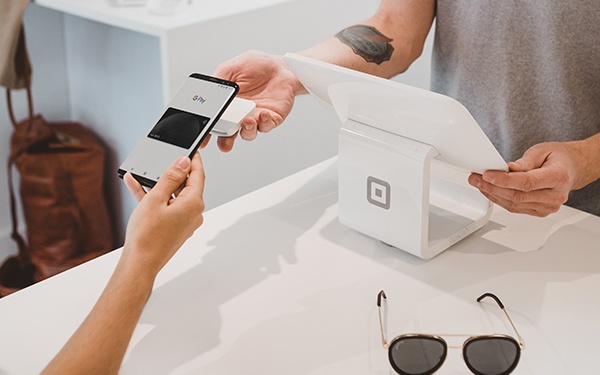One of the joys of finally launching your vinyl cutting business is the opportunity of growing it.
A bigger business equals more profit more creative satisfaction for you, the CEO.
There are plenty of strategies for growing your business — many of which we’ll be looking at over the next few weeks — but one of the easiest ways to generate more profit in the early days of your craft business is to open up a number of different income streams.
What we mean by that is selling your products in more than just one place.
Let’s say that at the moment, you only sell your vinyl creations on Etsy. That’s all well and good, but it means that your vinyl business is 100% dependent on Etsy. What happens if you get kicked off the platform for some minor infraction? Or your listings plummet to page 10 of the search results? Or — horror upon horrors — Etsy decides to shut up shop?!
Your business crumbles, that’s what.
But if you’re selling your products in a variety of places — different online marketplaces, let’s say, your own website and even in person at craft fairs — you’ve suddenly got a safety net to fall back on.
And not only does having multiple income streams protect you if one of those streams bottoms out, but it also gives you much more opportunity to profit.
Your customers on Etsy, for instance, aren’t going to be the same people shopping at craft fairs, or even at other places online. Each time you set up a store in a different place, you’re finding a new audience for your products.
And that means more profits 🤑
To help you diversify your income streams and grow your craft business, we’ve compiled a list of all the different places you could be selling your vinyl products. You won’t necessarily want to use all of them, but some of them should be the perfect fit for you and your business.
Let’s get into it…
Post Contents
Etsy
We always tell new craft business owners that while the world doesn’t revolve around Etsy, it’s a great place to start.
It’s the largest marketplace for handmade goods in the world with a potential 25 million customers right at your fingertips.
Most of us old hands started selling our products on Etsy — some of us still do 😉 — and it really is the perfect place to start your craft business in our humble opinion.
There’s nothing quite like the feeling of making your products in your craft room in small town America, getting ready to send them to people in every corner of the world. It’s a thrill.
One of the things we love about Etsy is the amount of freedom they give you to set up your shop exactly how you want, while also offering plenty of support. They have a shipping calculator to help you set shipping fees and their back-end order system makes it really easy to see the exact status of every single one of your orders — this is super helpful in the busy holiday season.
On top of all that, their selling fees are very reasonable — at the moment, it costs $0.20 to list an item and they take 5% of every sale too.
Amazon Handmade
https://services.amazon.com/handmade/handmade.html
Keeping on the subject of online marketplaces, Amazon Handmade is another one that’s well worth exploring for your craft business.
You have to apply to sell on their marketplace and it’s a much stricter operation than what’s on offer at Etsy, but there’s no doubt that you’ll be in a great position once you’re accepted.
Amazon, after all, is the largest online marketplace in the world.
The Handmade program is particularly prestigious — you’ll be carefully vetted to ensure that your products are truly artisanal — and, as such, you’ll be bound by their strict rules and processes if you want to get accepted.
Their selling fees are on the higher side, but thankfully there’s no hidden fees like you get with some places. They simply take a straight 15% deduction from every sale made.
Bonanza
Smaller than Etsy and Amazon but still nonetheless a great optional income stream for you is online marketplace Bonanza.
It’s continually voted as one of the best places to sell online — we’re sure that a large part of the reasoning for this is the fact that its fees are fantastically low.
They advertize as having zero listing fees and set-up costs — a major boost for brand new craft businesses who are setting out on a shoestring budget.
And when we last checked, their fees were a super-low 3.5% on transactions. Sure, it’s not as big as Amazon, but it’s certainly a cheaper place to get selling!
Another great thing about Bonanza is the fact that they have a very close relationship with Google Shopping, so they automatically advertize your products on there for you for maximum exposure.
Setting up a webstore on here is very easy and fun too. It’s a great place to get started.
ArtFire
ArtFire is another smaller marketplace, but certainly one with its own unique customers and feel.
If you set up an account on ArtFire, you’ll be setting up your own ’boutique’ and there are plenty of arty, crafty categories that you’ll be able to insert your products into.
Running an ArtFire account is easy and relatively low cost to boot.
They change a flat $4.95 per month, which allows up to 250 active listings, as well as a $0.23 listing fee per item. They’ll also share your listings with search engines to generate even more exposure for your products — a great way to open up additional revenue streams!
Society6
Depending on what type of crafts you’re selling, you might find a home for it at Society6.
Their prestigious selling program tends more towards art and photography rather than the more traditional arts and crafts but they do advertize themselves as an open community so you might well find a place here if you have artwork on offer.
One of the best things about Society6 is just how easy it is to manage a business on here — all you need to do after you’ve created your account is to upload your artwork and make it available for sale on their own range of products.
When one of your products is sold, you don’t need to do anything — they will produce, package and ship it for you. Amazing!
As you might expect with a selling program where your input is minimal, you don’t get as much commission on Society6 as you might on other marketplaces — they give their artists 10% of every sale, as well as giving you the opportunity to earn affiliate income and control the markup on your art prints.
Your Own Website
Moving away from online marketplaces, one of the best places to set up an income stream is by opening your own website for your craft business.
Unlike using a marketplace, you have complete control over your own website, and aren’t slave to their search engine algorithms or commission structure.
Unfortunately, many small craft business owners neglect setting up their own website because they’re worried about how much work it takes to maintain it.
And let’s not beat around the bush, there’s certainly work involved:
- Actually building the website and e-commerce store
- Tracking and accounting for all orders yourself
- Monitoring stock levels yourself
- Calculating shipping costs
There are definitely ways to make this easier for yourself.
For example, there are cheap online website builders that make building a website as easy as pie, and you can track all orders and stock yourself using an Excel or Google Sheets spreadsheet. You just need to remember to keep on top of it daily!
But running your own website does undoubtedly add an extra layer of administration to your craft business that you may not be ready for yet. Generally, we recommend waiting until you’ve established your business on the online marketplaces we talked about above so you already have some money that you can reinvest into building and maintaining your own website.
Some people even hire a webmaster to look after this aspect of their business for them.
One thing we would recommend though is securing your business domain name as soon as possible. Ideally, before you even launch your business so you can be sure that it’s available. Simply head over to GoDaddy’s domain checker and run your name through their checker to see whether or not it’s available — if it is, buy it.
You’ll want to secure it early, just in case someone sees how successful your business is on Etsy, for instance, and decides to swoop in and take it over from you.
Once you’ve secured the domain, you can simply sit on it until you’re ready to use it. They’re very cheap to maintain over the years.
And once you are ready to build your own website, you’ll be ready to open up a potentially very lucrative income stream where you get to keep 100% of the profits. Ideal 😍
Facebook and Instagram now both allow you to set up stores within their platforms so your followers can immediately click and buy your products while they’re browsing social media.
This is definitely the way that online shopping is headed so it’s a great idea to get your craft business down in the trenches now so you can be well established by the time that everyone starts to online shop from their Facebook account.
Setting up Facebook and Instagram profiles for your craft business is essential if you want to be successful in this day and age, so setting up a store on these profiles is a really easy way to extend this.
Unlike setting up your own e-commerce store on your website, managing a social media store is much less time and labor intensive — although you still need to remember to track and account for all your orders within an appropriate time frame.
Facebook is particularly well equipped as an online store as you can add your listings easily, as well as things like your store policy and returns system. And as Instagram is owned by Facebook, the two integrate more or less seamlessly.
Setting up stores on your business profiles isn’t the only income stream you can generate through social media — once you have enough followers, larger craft brands and suppliers may look to you for advertizing and even pay you to post for them.
Craft Fairs
So far, all we’ve talked about is opening up different revenue streams online, but it’s also worth considering the power of selling in person as well.
While selling locally doesn’t offer you quite the same scope of a global online marketplace, it nevertheless is a great way to touch base with your customers and get involved with a local crafting community.
Of course, back in the days before Etsy, craft fairs were where everyone sold their handmade wares — and they’re still super popular today.
We always recommend selling both online and in person in order to get the best of both worlds as restricting yourself to just one does limit your income streams.
Pros of Craft Fairs
- Very popular with local people, especially in the holiday season
- A great way to interact with your customer base
- A good way to get custom orders
- An easy way to meet other local crafters and get involved in the local crafting community
Cons of Craft Fairs
- Unlike selling online, you have to create plenty of stock beforehand to take with you which you’re not guaranteed to sell
- You’ll either have to pay commission on your sales or a flat up-front stall free — the latter can be expensive if you don’t get many customers
- You’ll be in direct competition with the other sellers at the fair
What other income streams do you think are worth pursuing for your craft business?
For more tips and ideas on making money from crafts, check out our Craft Business section.



